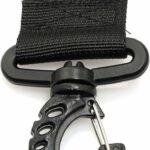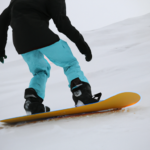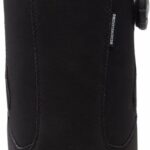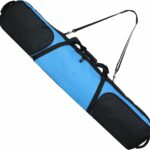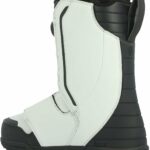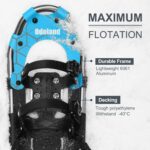Imagine gliding down snowy slopes, feeling the rush of frosty air against your face as you maneuver your snowboard with precision and style. Yet, a crucial aspect of achieving this picturesque scenario is knowing how wide your stance on the snowboard should be. This article will address this question, helping you understand the reasoning behind the width and how to set yours perfectly. The correct stance on your snowboard can make the world of difference in your overall experience, whether you’re a beginner learning your first move or a seasoned pro looking for more control and stability. Strap in, because you’re going to learn all the ins and outs of the perfect snowboard stance width in the exciting ride that waits for you.
Understanding the Basics of Snowboard Stance
Snowboarding is a sport that offers a unique blend of adrenaline, skill, and freedom, across mesmerizing natural landscapes. Key to delivering a memorable and enjoyable experience on the mountain, are various techniques and fundamentals. Among these, your snowboard stance holds a significant place.
What is Snowboard Stance?
Simply put, your snowboard stance is how you stand on your snowboard. It covers a variety of factors such as the direction you face (whether you’re standing with your left foot forward, which is termed ‘regular’, or with your right foot forward, termed ‘goofy’), the width between your feet, and the angle of your feet.
Why is Snowboard Stance Important?
A correct and comfortable snowboard stance is essential for maintaining a good balance and control while cruising across different terrains and pulling off different tricks. The wrong stance can result in loss of control, discomfort, and increased risk of injuries. It can also limit your progress and enjoyment on the slopes.
Determining Your Natural Stance
Recognizing your natural stance is crucial before you set foot on a snowboard. It lets you navigate the slopes more confidently and comfortably.
Regular vs. Goofy: Figuring Out Your Dominant Foot
If you naturally put your left foot forward, you fall into the ‘Regular’ stance category; on the other hand, if your right foot takes the lead, you’re classified as ‘Goofy’. Determining your dominant foot is simple – think about which foot you would use to kick a ball or step on a stair first.
Does Stance Direction Affect the Width?
Typically, whether you ride regular or goofy does not directly impact the width of your stance. It’s a matter of personal comfort and the riding style you plan to pursue.
Balance Tests to Determine Your Natural Stance
Stand up and ask someone to gently push you from behind, the foot you instinctively put forward to balance yourself reveals your dominant foot. Another way is by sliding across a slippery floor; the foot that takes the lead is generally your dominant foot.
Factors Influencing Stance Width on Snowboard
Identifying your ideal stance width could require some experimentation, but a great starting point would be shoulder-width apart. However, other factors might influence your choice of width.
Height and Body Proportions
Generally, taller people will feel more comfortable with a wider stance and shorter people with a narrower stance. But body proportions can also come into play. If you have long legs, you might prefer a wider stance even if you’re not particularly tall.
Personal Comfort and Preference
Different snowboarders find comfort in different stances. Some find a narrow stance more natural, while others prefer a wider one. It’s important to find a stance that leaves you feeling balanced and comfortable.
Riding Style and Disciplines
Different snowboarding styles might require variations in stance width. For instance, freestyle snowboarding often demands a wider stance for better stability while pulling tricks, whereas, for freeride or alpine snowboarding, a narrower stance provides more speed and carving precision.
The Impact of Snowboard Stance Width on Performance
Stance width significantly influences your comfort and performance on the snowboard. It directly correlates with your control, stability, speed, and maneuverability on the slopes.
Control and Stability
A wider stance generally provides greater stability and control, especially when performing tricks or riding on challenging terrain. It lowers your center of gravity, thereby improving balance.
Agility and Maneuverability
A narrower stance tends to improve your agility and maneuverability. It allows for quicker and more responsive transitions from edge to edge, which are essential in carving and precision riding.
Speed and Momentum
Generally, a narrower stance, combined with a forward lean, can provide increased speeds. That lean provides the aerodynamics required for higher momentum.
Recommended Snowboard Stance Widths
The recommended snowboard stance width depends largely on the individual rider’s body type, skill level, and riding style.
Basic Recommendation for Beginners
As a starting point, most beginners will find a shoulder-width stance comfortable. This provides a good balance of stability and maneuverability.
Stance Widths for Different Riding Styles
Riders involved in freestyling/freeriding typically prefer a wider stance to enhance balance and control during tricks, while alpine riders often adopt a narrower stance that provides quicker turns and better speed.
Testing Different Stance Widths
Since snowboarding is a highly individualized sport, it’s advisable to try out different stance widths to find the one most comfortable for you. Be sure to test in varying conditions and terrains.
Adjusting Your Snowboard Stance Width
How to Measure Your Stance Width
Stance width is determined by measuring the distance from the center of one foot’s binding plate to the center of the other’s. Use a tape measure for accurate results.
Tools Required for Adjustment
To adjust the bindings, you’ll need a snowboard tool or a #3 Phillips screwdriver, and of course, your snowboard.
Steps for Adjusting Your Bindings
Loosen the binding screws but refrain from taking them out. Slide the binding to your desired position and then re-tighten the screws. It’s crucial to remember not to overtighten screws as this could damage your snowboard.
Effects of Too Wide or Too Narrow Stance
Implications of an Excessively Wide Stance
An excessively wide stance can lead to inadequate weight distribution on the board leading to decreased maneuverability and potential strain on your knees.
Disadvantages of a Too Narrow Stance
On the other hand, a too narrow stance might hinder your balance, stability, and ability to perform certain tricks.
Identifying a Stance Too Wide or Too Narrow for You
If you’re often losing control, feeling discomfort or pain in your calves, or having difficulty transferring weight, your stance might be too wide or too narrow.
Expert Tips for Perfecting Your Snowboard Stance
Experimenting with Varying Widths
As your skills progress, experiment with different stance widths. This will help you find your sweet spot for different terrains and styles.
Taking Into Account Snow and Weather Conditions
Different snow and weather conditions may require slight adjustments in your stance. So, do factor in these conditions while determining your stance.
Regularly Checking and Adjusting Your Bindings
Over time, changes in your body, skill level, and snowboarding style can require further adjustments to your bindings, so regular checks and adjustments are important.
Common Snowboard Stance Mistakes to Avoid
Using an Unnatural or Uncomfortable Stance
Avoid adopting a stance that feels unnatural or uncomfortable, just because it’s what someone else uses. As we mentioned, everyone is unique and what works for someone else might not work for you.
Not Adjusting Stance for Different Terrain or Conditions
What works on a freestyle park may not be ideal on black diamond runs. Adjusting your stance to match the terrain and snow conditions is vital for optimal performance and safety.
Ignoring the Need to Adjust as Skills Progress
As you get better at snowboarding your stance requirements might change too. So, never ignore the need to adjust your stance as your skills improve.
Conclusion – Finding Your Ideal Snowboard Stance Width
Importance of Finding Your Ideal Stance Width
Finding your optimal stance width is invaluable for maintaining balance, control, and getting the most enjoyment out of your snowboarding experiences. It contributes enormously to your overall performance on the slopes.
Benefits of a Comfortable and Suitable Stance Width
An appropriate stance width offers various benefits, such as improved balance, better control, smoother turns, reduced fatigue, and more high-level snowboarding fun.
Personal Adaptation and Constant Reassessment
In conclusion, remember snowboarding is a journey of personal progress. A continual reassessment of your stance width is part of that journey. Adapt your stance to your evolving abilities and the endless wave of fresh snow ahead, and unlock the true power of your snowboarding saga.
- What Snowboard Bindings Should I Get? - January 23, 2024
- What Size Screws For Snowboard Bindings? - January 23, 2024
- How To Snowmobile On Water? - January 23, 2024


